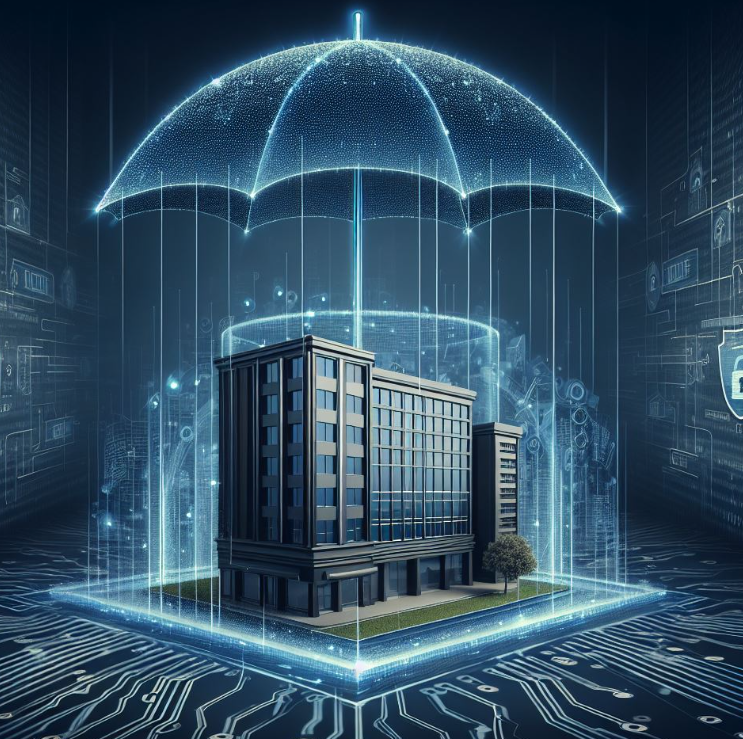Cyber Risk Management: Where are your security gaps?
Cyber risk management is the process of identifying, assessing, and mitigating the potential threats and impacts of cyberattacks on your business. Cyberattacks can cause serious damage to your reputation, operations, finances, and customer trust.
According to Loffler, in 2023 the average cost for full recovery of a typical on-premise SMB server environment can be upwards of $50,000. "Even if good backups are in place and the attack is caught early, any mainstream attack against an SMB can range from $10,000 to $50,000 plus. This includes the cost of investigating the scope of the attack, as well as remediating and repairing the environment through restoring services. Not to mention that if it was a ransom situation, the cost of the ransom would be on top of all that", says Randy Anderson, a cybersecurity expert with the Loffler. That’s why cyber risk management is essential for small and medium-sized businesses (SMBs) that want to survive and thrive in the digital age.
But how can you implement effective cyber risk management for your business? What are the best practices and tools that you can use to protect your business from cyber threats? In this post, we will answer these questions and provide you with some practical tips and resources to help you develop and tailor a cyber risk management plan that meets the needs of your business.
Just understand this, your business isn't too small to be attacked. The bad guys focus on you because you're small and they know you likely don't have the resources in place to stop them.
Quick check: A small sample of cybersecurity incidents to SMBs this year:
- Green Ford Sales, a car dealership in Kansas, lost $23,000 when hackers broke into their network and swiped bank account info. They added nine fake employees to the company payroll in less than 24 hours and paid them a total of $63,000 before the company caught on.
- Wright Hotels, a real estate development firm, had $1 million drained from their bank account after thieves gained access to a company e-mail account. Information gleaned from e-mails allowed the thieves to impersonate the owner and convince the bookkeeper to wire money to an account in China.
- Maine-based PATCO Construction lost $588,000 in a Trojan horse cyber-heist. They managed to reclaim some of it, but that was offset by interest on thousands of dollars in overdraft loans from their bank.
Cyber Risk Management Best Practices
Here are some of the best practices that you can follow to improve your cyber risk management for your SMB:
- Conduct a cybersecurity assessment. A cybersecurity assessment is an honest, transparent analysis of the strength of your business technology defenses. It helps you identify the vulnerabilities and gaps in your security posture, and prioritize the actions that you need to take to address them.
- Train your employees. Your employees are your first line of defense against cyberattacks. They need to be aware of the common cyber threats, such as phishing, ransomware, malware, and social engineering, and how to avoid or report them. Our Advanced Cybersecurity Awareness Training Program trains your employees to spot these malicious emails, turning them from a liability into an asset for your business. Included with IT PROTECT.
- Protect remote workers with a VPN or use an encrypted cloud service. A virtual private network (VPN) is a service that encrypts and secures your internet connection, making it harder for hackers to intercept or tamper with your data. A VPN is especially important for remote workers who use public or unsecured Wi-Fi networks to access your business data and systems. You can use a reliable VPN service, such as NordVPN or ExpressVPN, to protect your remote workers from cyberattacks. Another more modern approach is using an encryption cloud service such as Microsoft 365 or Google Workspace to provide your remote employees safe and secure access to company resources.
- Use modern security tools. Traditional antivirus is a basic and outdated cybersecurity tool that relies on a predefined list of known malware signatures to detect and remove threats. However, this approach is not effective against today’s threats, which are more sophisticated, diverse, and dynamic.
EDR (Endpoint Detection and Response) and MDR (Managed Detection and Response) are more advanced and proactive cybersecurity solutions that can overcome the challenges of traditional antivirus. EDR is a software that monitors and analyzes the behavior and activity of endpoints (such as computers, servers, or mobile devices) to detect and respond to potential threats. MDR is a service that combines the capabilities of EDR with the expertise of a dedicated security team that provides 24/7 monitoring, threat hunting, incident response, and remediation. Learn more about our 24/7/365 Managed SOC PLUS cybersecurity platform, MDR that is included in our IT PROTECT solution. - Secure your networks. Your networks are the backbone of your business, connecting your devices, systems, and data. You need to secure your networks from unauthorized access, intrusion, or disruption. You can use a firewall system, which is a software or hardware device that monitors and controls the incoming and outgoing network traffic, and blocks any suspicious or malicious activity. You can also use a cyber threat intelligence platform, like our 24/7/365 Managed SOC PLUS cybersecurity platform, which is a service that collects and analyzes data from various sources, such as your endpoints, cloud services like Microsoft 365 and Google workspace, EDR services you've deployed, and provides actionable insights and alerts on your environment.
- Use multi-factor authentication (MFA). This one is super simple and you instantly can prevent most types of attacks if you implement properly. Multi-factor authentication (MFA) is a security feature that requires users to provide more than one piece of evidence to verify their identity before accessing your business data and systems. MFA can prevent unauthorized access even if a user’s password is compromised, as it adds an extra layer of protection, such as a code sent to a phone or an email, a biometric scan, or a physical token. You can enable MFA for your SMB using services like Microsoft Authenticator or Google Authenticator, which are compatible with many applications and platforms.
- Implement strong email security. Email is one of the most common ways that cybercriminals can target your SMB, as they can use it to send phishing messages, malware attachments, or ransomware links. To protect your email communications from prying eyes, you can use encryption, which scrambles the content of your messages and makes them unreadable to anyone who does not have the decryption key.
Use email filtering tools. Email filtering is a mail security technique that helps you sort and organize your incoming and outgoing emails, and identify unwanted messages such as spam, malware, and phishing attempts. Email filtering can improve your productivity, protect your privacy, and prevent cyberattacks. Our email security solution within IT PROTECT offers features like automatic categorization, notification banners for external email, and spam blocking. When you mark an email as phishing, it will remove it from the inboxes of anyone else in the organization. Preventing someone else from clicking on a malicious link. - Have a data backup strategy in place. Implementing a data backup strategy is a crucial step for any SMB that wants to protect its data from loss, corruption, or theft. A data backup strategy involves identifying the critical data and systems that need to be backed up, determining the appropriate backup methods, and creating a schedule for regularly creating and testing backups. A data backup strategy also requires choosing a suitable location for storing the backups, whether on-site or off-site, and ensuring that the backups are secure and accessible. We at Cloud Matrix IT ensure our clients are protected with automated backups of critical data.
Cyber risk management is not a luxury, but a necessity for SMBs that want to succeed in the digital world. By following the best practices and using the tools that we discussed in this blog post, you can improve your cyber risk management for your SMB exponentially, and protect your business from cyber threats.
If you're ready to take your cybersecurity to the right level and instantly improve your security posture in one day, hit us with a message and let's chat about it.
Cloud Matrix IT™ is a managed IT and technology consulting firm who specializes in providing proactive IT solutions to small and medium-sized businesses. We designed IT PROTECT specifically for the SMB. IT PROTECT is a comprehensive suite of solutions & processes that help your business save time, reduce costs, provide your staff IT support, and help you stay protected with our fully managed 24/7/365 SOC PLUS cybersecurity platform. Yes, even weekends and holidays.


